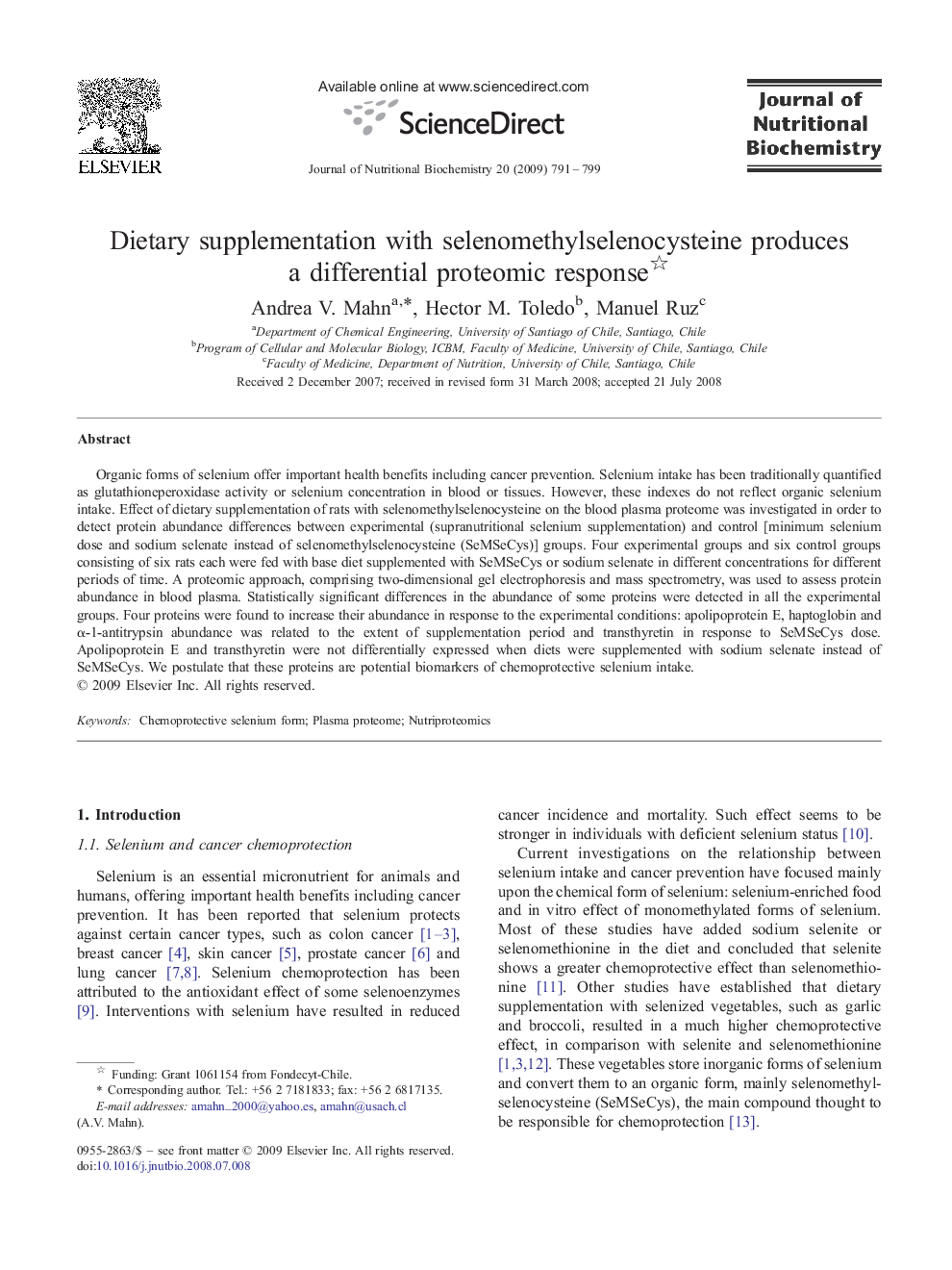| Article ID | Journal | Published Year | Pages | File Type |
|---|---|---|---|---|
| 1990141 | The Journal of Nutritional Biochemistry | 2009 | 9 Pages |
Organic forms of selenium offer important health benefits including cancer prevention. Selenium intake has been traditionally quantified as glutathioneperoxidase activity or selenium concentration in blood or tissues. However, these indexes do not reflect organic selenium intake. Effect of dietary supplementation of rats with selenomethylselenocysteine on the blood plasma proteome was investigated in order to detect protein abundance differences between experimental (supranutritional selenium supplementation) and control [minimum selenium dose and sodium selenate instead of selenomethylselenocysteine (SeMSeCys)] groups. Four experimental groups and six control groups consisting of six rats each were fed with base diet supplemented with SeMSeCys or sodium selenate in different concentrations for different periods of time. A proteomic approach, comprising two-dimensional gel electrophoresis and mass spectrometry, was used to assess protein abundance in blood plasma. Statistically significant differences in the abundance of some proteins were detected in all the experimental groups. Four proteins were found to increase their abundance in response to the experimental conditions: apolipoprotein E, haptoglobin and α-1-antitrypsin abundance was related to the extent of supplementation period and transthyretin in response to SeMSeCys dose. Apolipoprotein E and transthyretin were not differentially expressed when diets were supplemented with sodium selenate instead of SeMSeCys. We postulate that these proteins are potential biomarkers of chemoprotective selenium intake.
